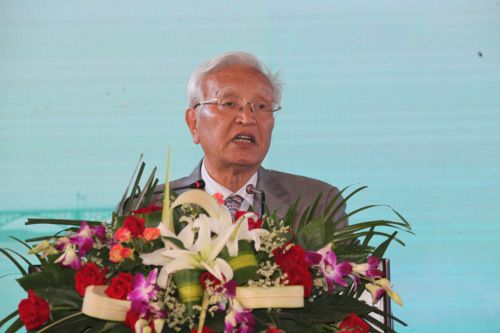
In the past 20 years, the clean energy industry, specifically wind power and photovoltaic power, has developed rapidly in China. Today, the international community has universally recognized China’s contributions to international green energy development.
As of June 2017, the installed capacity of photovoltaic power in China has exceeded 100 million kilowatts, which is higher than the total capacity of the United States, India and Japan.
In 2016, the photovoltaic modules produced by China accounted for 3/4 of world’s production -- demonstrating China’s dominance in the photovoltaic power sector. In a short time, China's photovoltaic industry has grown from a weak grass-roots industry into a global industrial front-runner.
The rise of the photovoltaic industry in China could not have been possible without the contributions of Dr. Shi Zhengrong, the founder of Wuxi Suntech, and Mr. Miao Liansheng, the founder of the Yingli Group in Baoding.
At the beginning of the 21st century their insights and vision led to the founding of solar cell enterprises and the development of industrial production of photovoltaic cells in China. At that time, many state-owned enterprises also entered the photovoltaic industry, but most of them failed to survive due to fierce market competition.
Many private polysilicon enterprises such as GCL, Trina Solar, Jinko Solar and Canadian Solar, which later achieved success, continue to improve technology and reduce the production cost of polysilicon by relying on scale advantages.
These private enterprises combined with the knowledge of experts with experience overseas allowed China to break the monopoly of the international giants in the production of polysilicon material and gradually achieve self-sufficiency. State-owned enterprises have never accomplished this achievement.
The rise of China's photovoltaic industry has benefited from China’s strong manufacturing base and product supporting system. Photovoltaic inverters, for example, are not only produced by Sungrow but also by Huawei.
Today, Huawei has developed into an important manufacturer of inverters by augmenting their competitive edge through communication equipment. Solar cell production offers another example. At first, China had to import the whole solar cell production line, and then key equipment, but now, China can assemble and manufacture the whole production line – a shift that has greatly reduced production costs. Technological solutions have also proved critical to the rise of the photovoltaic industry in China.
Despite its rapid rise and current success, the future direction of the photovoltaic industry in China is worth considering. Currently, heavy reliance on state subsidies is only a method of developmental expediency in the photovoltaic industry. Flaws in the design of the subsidy policy and subsidy periods that are too long for photovoltaic power generation means that the present policy is unsustainable. Current policies will eventually impede the development scale of photovoltaic power.
Those involved in the photovoltaic industry must understand that the future of the industry depends on reducing costs and fostering competitiveness through technological innovation. In addition, competition mechanisms should be introduced to give competitive enterprises earlier access to the qualifications necessary for investment and construction.
Today, there is no shortage of electricity nationwide. Instead, the problem centers on access to platforms that can absorb and consume new energy. In the future, the restrictive factors that limit the speed of green energy development will not be technical problems but the market competition between green energy and coal-fired power will be the industry decisive factor.




 A single purchase
A single purchase








